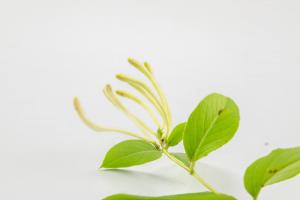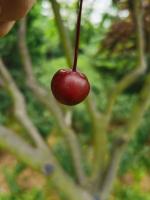What to Put at the Bottom of Potted Plants
Potted plants are a great way to add visual appeal to a space, whether it's inside your home or in your outdoor area. They come in various sizes, shapes, and colors and can give a breath of fresh air to the atmosphere. But having a potted plant isn't just about the plant itself; it's also about what you put under it. In this article, we'll discuss the different materials you can use at the bottom of your potted plants to improve drainage and help your plants thrive.
Gravel or Pebbles
One of the most popular ways to create drainage for potted plants is by using gravel or pebbles. These materials allow air and water to circulate at the bottom of your plant, which can help prevent overwatering and root rot. The gravel or pebbles also act as a barrier between the roots and standing water, which can cause a lot of damage. It's essential to use proper-sized gravel or pebbles, so the water can flow freely and not get trapped at the bottom. Large gravel pieces may cause drainage issues and prevent water from passing through, while tiny pebbles can quickly clog up the drainage holes.
Stones
Another alternative to gravel or pebbles is stones. Stepping stones or river rocks are great options for potted plants. They're natural and come in different shapes and sizes, which can add an aesthetic appeal to your plants. They also allow for proper drainage and help prevent soil compaction. The only thing to keep in mind when using stones is to make sure they're big enough not to get stuck in the drainage holes.
Broken Pottery
You might be wondering what to do with broken pottery. You can use them to your advantage by placing them at the bottom of your potted plants. The broken pieces of pottery work similarly to gravel or pebbles, allowing for proper drainage and preventing roots from soaking in standing water. They also provide extra space, which can increase airflow and improve soil aeration. You can use the broken pieces at the bottom of your pots, and then layer soil on top of them to cover them up.
Packing Peanuts
A relatively new practice has been using packing peanuts as a filler at the bottom of potted plants. This method has become popular, mainly because packing peanuts aren't biodegradable and can take a long time to decompose. By using them as a filler, you're giving them another purpose and eliminating some waste. The packing peanuts provide a lightweight, inexpensive, and long-lasting filler that doesn't break down over time, making it easier to repot your plants in the future. However, be aware that some packing peanuts may contain toxins or chemicals that can harm your plants, so make sure to purchase them from a reputable source.
In Conclusion
Potted plants are beautiful, and by using the right materials at the bottom, you can ensure that they remain healthy and thriving. Gravel, pebbles, stones, broken pottery, and packing peanuts are some of the options you can use. Make sure not to use materials that are too large or too small and keep in mind the plant's size and watering needs. With a little bit of care and planning, you can create a beautiful and healthy environment for your potted plants to grow and flourish.

 how many times do yo...
how many times do yo... how many planted tre...
how many planted tre... how many pine trees ...
how many pine trees ... how many pecan trees...
how many pecan trees... how many plants comp...
how many plants comp... how many plants can ...
how many plants can ... how many plants and ...
how many plants and ... how many pepper plan...
how many pepper plan...






























